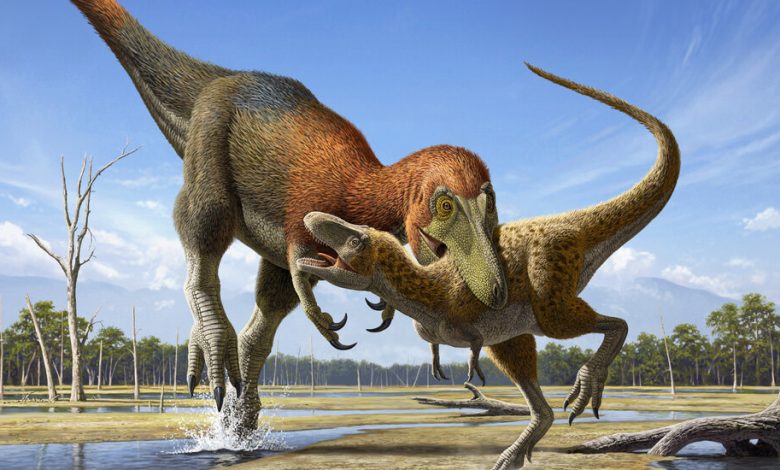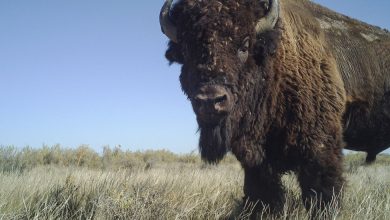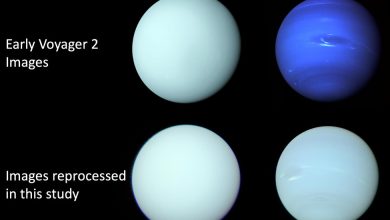Study Aims to Bring a Tinier Tyrannosaur Back From Oblivion

It is only 23 inches long, but one tyrannosaur skull has been a bone of serious contention among paleontologists for decades.
In 1988, a team of researchers named it Nanotyrannus lancensis, suggesting that it represented a distinct animal that lived in the shadow of Tyrannosaurus rex. In 1999, another group argued that the skull and similar specimens were T. rex as a teenager, before the species underwent an extraordinary growth spurt that preceded adulthood.
For years, the teen T. rex hypothesis gained traction.
“Most people bought into it, including me,” said Nick Longrich, a paleontologist with the University of Bath in England.
But Dr. Longrich has changed his tune. In a study published Wednesday in the journal Fossil Studies, he and colleagues argue that enough evidence exists to resurrect Nanotyrannusas its own species among the larger Tyrannosaur family. Based on anatomical features, they argue, it isn’t even particularly closely related to T. rex.
Other experts say the study is unlikely to end the debate.
“It’s sort of like Schrodinger’s dinosaur,” said Thomas Holtz, a paleontologist at the University of Maryland who was not involved with the paper. “This paper’s going to keep people talking about it, but it’s not going to really resolve it.”
To make its case, Dr. Longrich’s team studied the original 23-inch skull and more recent finds named Jane and Petey, as well as a long-disputed tyrannosaur specimen, the “dueling dinosaurs.” All of these have been argued to represent adolescent T. rex, Dr. Longrich said. But his team said it found around 150 differences in their anatomy, including skull details; an extended, bladelike snout; and longer arms and claws than adult T. rex.
He also said the specimens had features consistent with mature animals, not adolescents. The growth rings inside the bone from three specimens — including Jane and Petey — likewise suggest slowing growth rates. The animals were on track to weigh over a ton, rather than the T. rex, which was four to five tons, the researchers estimated.
“We have three individuals, which basically rules out an individual variation or aberrant growth pattern,” Dr. Longrich said. “What we’re seeing is that the growth patterns are inconsistent with these animals being juveniles.”
Where, then, are the actual juvenile T. rex? Dr. Longrich believes he’s found a fragment of one — a piece of skull from the University of California, Berkeley, collections described in the paper. “In every single feature it was T.rex,” he said.
Other paleontologists are not ready to throw out the teenage T. rex hypothesis, and they raised strong objections to the paper.
The specimens in question do show features in common with adult T. rex — among them the forehead, snout and braincase, said Thomas Carr, a paleontologist at Carthage College who first made the case that Nanotyrannusrepresented young T. rex. Moreover, he disagrees with the claim that they don’t fit the growth pattern in other tyrannosaur skulls.
“With T. rex and tyrannosaurs in general, differences between juveniles and adults are quite extreme and people are easily thrown,” Dr. Carr said.
Holly Woodward, a paleontologist at Oklahoma State University who produced some of the growth data used by Dr. Longrich’s team, also disputed their conclusions. The spacing of the innermost growth rings in the bone tissue of nearly full grown adult T. rex suggest “lower growth rates at younger ages before the big growth spurt,” she said.
Dr. Woodward added that the team’s choice of mathematical models risks producing a distorted picture that shows younger animals that are done growing, even if that isn’t the case.
“I’m just not convinced that the growth curve arguments support that hypothesis,” she said.
Dr. Longrich responded that teenage T. rex proponents haven’t proven their case either: “I’d throw it back in their camp and say, ‘Where is the evidence for your hypothesis?’”
He explained that “for Nanotyrannus to turn into T. rex, this requires an extraordinary number of transformations.” No other dinosaur develops like this, Dr. Longrich argues: Everything his team studied fits neatly into the Nanotyrannus form or the T. rex one.
Credible paleontologists have historically argued both sides of the issue, Dr. Holtz said. Part of the issue is that most T. rex specimens are adults, with only a few subadults. Everyone acknowledges that gap; they simply disagree about its meaning.
The discovery of either an older adult Nanotyrannusor a young T. rex distinct from the Nanotyrannus form would help clarify things, Dr. Holtz said. So could forthcoming data about Jane and the “dueling dinosaurs” tyrannosaur. While the team’s paper provides interesting suggestions, Dr. Holtz said it isn’t enough for him to reject the hypothesis “that these are juvenile T.rex.”
The argument continues. For an animal that may or may not have existed, Nanotyrannus is proving curiously difficult to kill.




